Will Insley / Will Insley (1929–2011)
Drawings, Photographs and Fragments of Abstract /Buildings/
Annemarie Verna Gallery is thrilled to present “Will Insley. Drawings, Photographs and Fragments of Abstract /Buildings/”, the artists third solo show at the gallery after exhibitions in 1974 and 1976.
Will Insley (1929-2011) was an American artist who – despite studying architectural thought – chose to work as an artist by thinking as an architect. He channeled his visions of a future civilization, embracing an art-architecture hybrid. He dedicated over 50 years to creating paintings, drawings, writing, models and photomontages based on his investigation of a theoretical civilization and focus on its single metropolis, ONECITY, a labyrinthine structure buried in the central North American plains between the Colorado Mountains and the Mississippi River. Insley’s ONECITY can be interpreted as an artist’s dystopian response to the ever-present questions regarding growing population density, global warming, and climate change. His interpretations were expressed almost 40 years ago:
“What [Insley] pondered is that American cities may eventually cease to function as dwelling places. People would live as nomads in the countryside until they de-cided to pool their resources and build a complex to accommodate them all—a last, desperate attempt to resolve their differences and ensure their survival.” (Will Insley and Maurice Poirier from Artnews on the occasion of Insley’s 1984 solo exhibition at the Guggenheim Museum)
All great artists seem to be possessed by a divine vision. Whether this vision comes from their experiences, philosophies, or artistic practices is up to the interpretation of the historian, the viewer, and in many cases can be found in the artists’ own words. Will Insley is one of these artists and experienced his artistic magnum opus ONECITY in complex visions from the 1950s-90s that interwove ideas of space, time, mythology, and abstraction. As his visions grew and became more elaborate, he began to discover all the sections of ONECITY: the Interior Building, the Opaque Library, the abstract /buildings/, and the metropolis’ main structure. Although the purpose of the city remained unclear, he understood that it was the only one in America at this unknown future time. As he experienced each vision, Insley recorded his findings as artworks: ‘Wall Fragment’ paintings, photomontage depictions, and intricate drawings, some taking as long as ten years to complete. Additionally, he documented the book of the civilization, “Fragments from the Interior Building,” a poetically obscure diary and thesis containing information of ONECITY, its outer /buildings/, and religious musings.
In the exhibition at Annemarie Verna Gallery, the drawings and photomontages of the ab-stract /buildings/ represent what lies beyond the outer city structure, buried in the wilderness outside of practical functions. Insley recorded that the “only reason for the /buildings/ existence is to contain spatial situations sympathetic to the religious beliefs of the civilization of ONECITY. This focuses on a worship of the horizon line and of a passing through a space in that line between the earth and sky and of then embarking on travel into and return from the future with future information.” The fragments on the other hand are full scale copies of wall fragments from the “Opaque Library” found in an imaginary archaeology. They are determined by the configuration of light on the library walls.
Insley’s projects were informed by boyhood experiences in the open horizon of Indianapolis where he lived next to a big, empty modern house vacant for many years. As he explored the forbidden space, he experienced for the first time a house without a current practical function. When Insley went away to Amherst College in Massachusetts in 1947, he accidentally discovered and explored an underground labyrinth of tunnels that carried heating pipes, curiously traversing the dark areas over many nights. He continued his infiltrations in Cambridge’s alleyways, vacant buildings, and sealed fire escapes while attending Harvard’s Graduate School of Architecture. After graduating and after two years in the army, Insley moved to New York City, where one late night he found a door open after hours to Grand Central Station. Before being escorted out by a guard, he was able to roam the vaulted expanse alone to experience its grandeur. Shortly after, he began wandering the streets of New York night after night to study the grid and plot his mental map of New York City.
In time, Insley became interested in understanding more about such spaces, and taking his knowledge to a subconscious level in experiencing an entire civilization. As his attention turned inward, he became consumed with the memories of spaces located in some other time. The mind to him was another abstract architectural structure and he dedicated his entire life to exploring and answering his own questions about the realm we live in, past, present and future.
Viewed today, Insley’s ONECITY continues to surprise and reach a new generation with questions regarding the human experience in a metropolis and our current environmental developments that had yet to happen during Insley’s lifetime. As the first artist to explore the expansion of pure abstract architectural space to its limits, Insley had an extraordinary vision of our collective future.
(Adaptation of Westwood Gallery’s press release, New York 2023)
Installation views

Installation view room 1

Installation view office room

Installation view showcase

Installation view showcase

Installation view showcase

Installation view showcase

Installation view room 1

Installation view room 2

Installation view room 2

Installation view room 2

Installation view room 3

Installation view room 3

Installation view room 4
Works
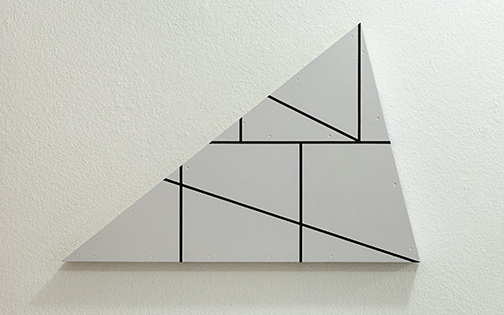
Wall Fragment No. 75.33
1975
41 x 61 x 4.8 cm
acrylic on masonite
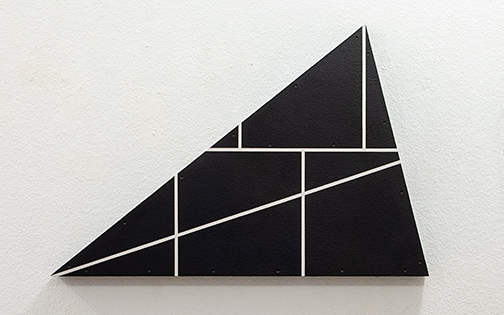
Wall Fragment No. 75.27
1975
41 x 61 x 4.8 cm
acrylic on masonite

Installation view with different
Wall Fragments
(see next pictures)
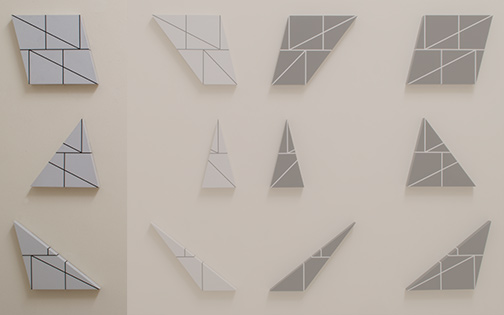
Wall Fragment No. 75.29
1975
41 x 50 x 4.8 cm
Wall Fragment No. 75.32
1975
41 x 41 x 4.8 cm
Wall Fragment No. 75.35
1975
41 x 51 x 4.8 cm
all: acrylic on masonite
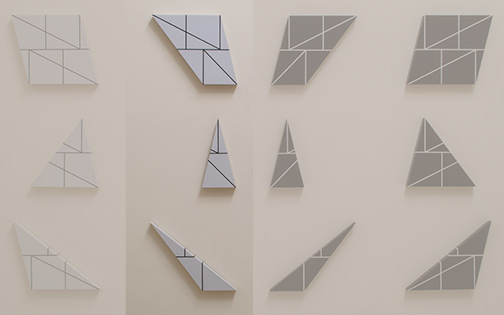
Wall Fragment No. 75.28
1975
41 x 50 x 4.8 cm
Wall Fragment No. 75.31
1975
41 x 20.5 x 4.8 cm
Wall Fragment No. 75.34
1975
42.5 x 51 x 4.8 cm
all: acrylic on masonite

Wall Fragment No. 75.19
1975
41 x 51.5 x 4.8 cm
Wall Fragment No. 75.22
1975
41 x 20.5 x 4.8 cm
Wall Fragment No. 75.25
1975
42.5 x 51 x 4.8 cm
all: acrylic on masonite
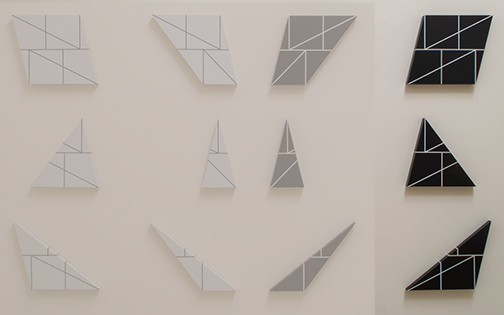
Wall Fragment No. 75.20
1975
41 x 51 x 4.8 cm
Wall Fragment No. 75.23
1975
41 x 41 x 4.8 cm
Wall Fragment No. 75.26
1975
40 x 51 x 4.8 cm
all: acrylic on masonite
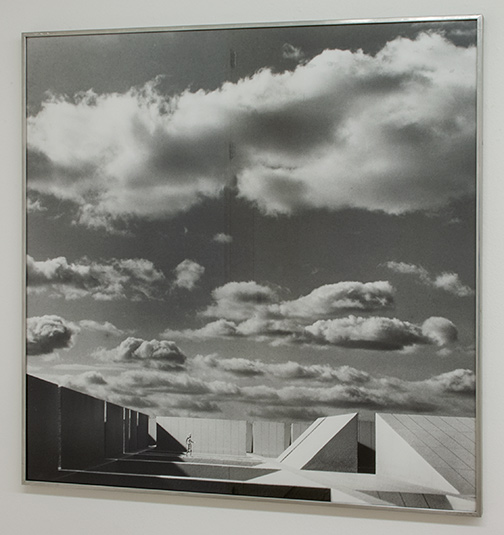
Passage Space Spiral Photo –
Interior Detail
1970 – 1971
75.5 x 75.5 cm
photomontage
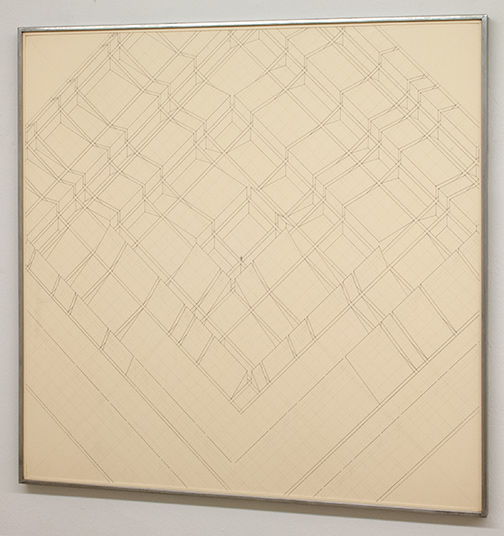
Passage Space Spiral Isometric Detail
1972
75.5 x 75.5 cm
ink and pencil on ragboard

Passage Space Mountain Isometric Section
1972
75.5 x 75.5 cm
ink and pencil on ragboard

Stage Space Reduce Elevation
1967 – 1973
75.5 x 75.5 cm
ink and pencil on ragboard
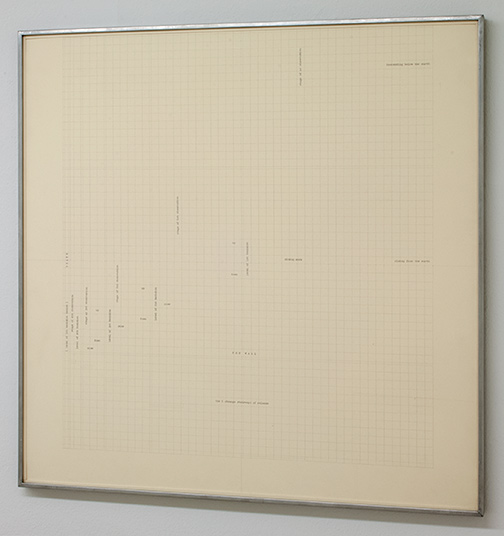
Stage Space Reduce Plan – Text
1967 – 1972
75.5 x 75.5 cm
ink and pencil on ragboard
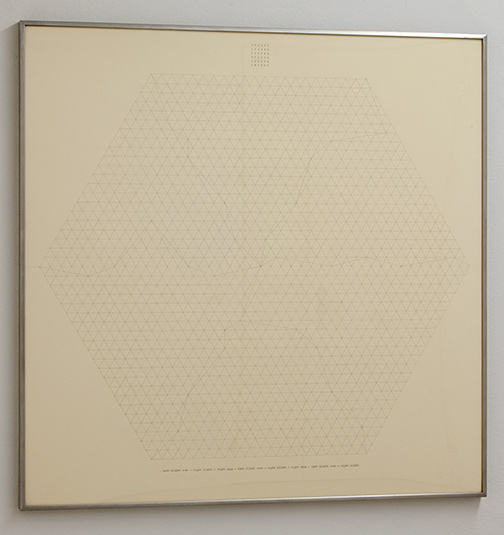
Channel Space Hexagon Ratio
1969 – 1973
75.5 x 75.5 cm
ink and pencil on ragboard
(Private Collection)

Channel Space Reverse Photo
1968 – 1972
75.5 x 75.5 cm
photomontage
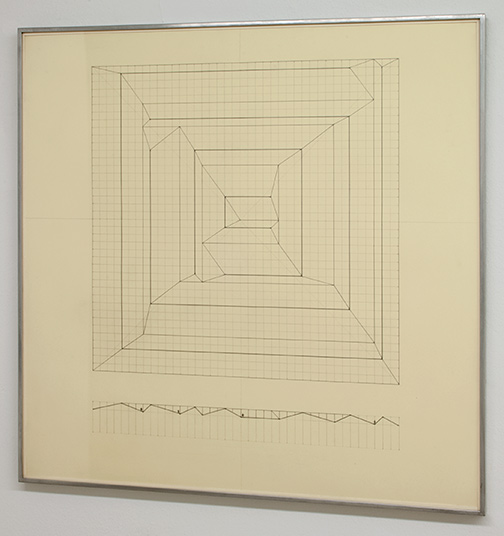
Channel Space Spiral Plan – Section
1968
75.5 x 75.5 cm
ink and pencil on ragboard
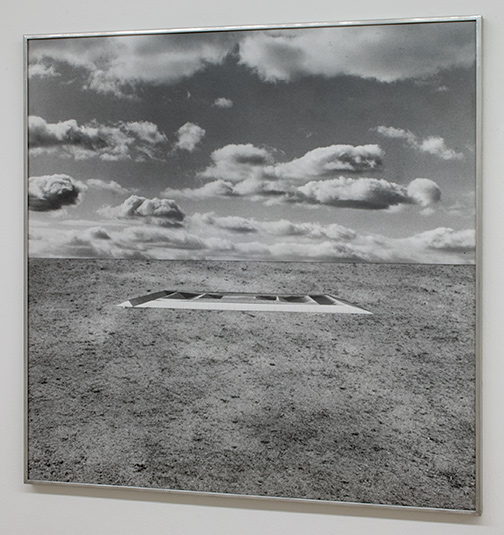
Channel Space Spiral Photo
1968 – 1972
75.5 x 75.5 cm
photomontage
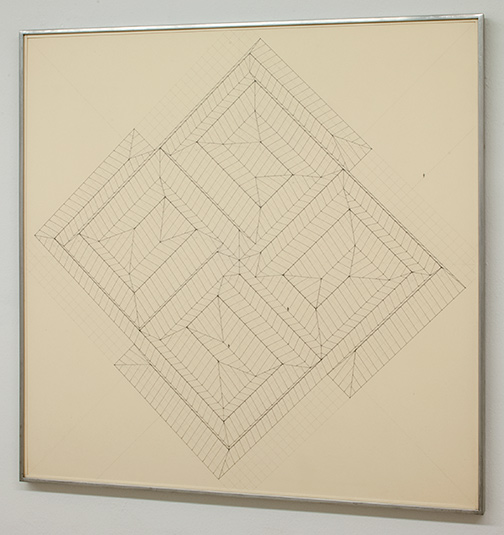
Channel Space Offset Isometric
1969
75.5 x 75.5 cm
ink and pencil on ragboard

Channel Space Offset Plan – Section
1969
75.5 x 75.5 cm
ink and pencil on ragboard
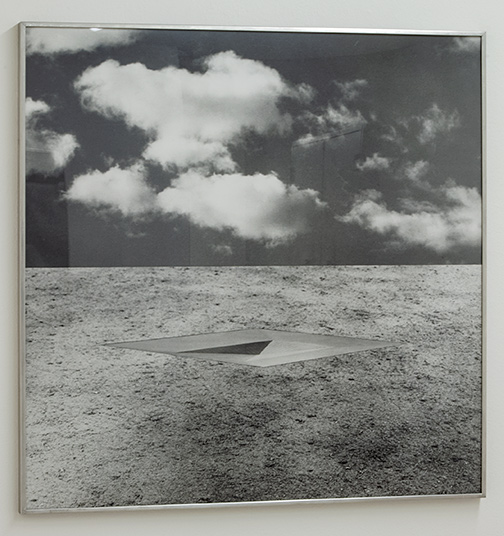
Volume Space 2 Photo
1969
75.5 x 75.5 cm
photomontage

Installation view with different
Wall Fragments
(see next pictures)

Wall Fragment No. 75.11
1975
41 x 41 x 4.8 cm
Wall Fragment No. 75.14
1975
41 x 41 x 4.8 cm
Wall Fragment No. 75.17
1975
41 x 41 x 4.8 cm
all: acrylic on masonite

Wall Fragment No. 75.10
1975
41 x 20.5 x 4.8 cm
Wall Fragment No. 75.13
1975
41 x 20.5 x 4.8 cm
Wall Fragment No. 75.16
1975
41 x 20.5 x 4.8 cm
all: acrylic on masonite

Wall Fragment No. 75.1
1975
41 x 20.5 x 4.8 cm
Wall Fragment No. 75.4
1975
41 x 20.5 x 4.8 cm
Wall Fragment No. 75.7
1975
41 x 20.5 x 4.8 cm
all: acrylic on masonite

Wall Fragment No. 75.2
1975
41 x 41 x 4.8 cm
Wall Fragment No. 75.5
1975
41 x 41 x 4.8 cm
Wall Fragment No. 75.8
1975
41 x 41 x 4.8 cm
all: acrylic on masonite
New
Exhibition
Dan Flavin (1933–1996) and Will Insley (1929–2011)
March 6 to April 26, 2024
New publications
James Bishop
James Bishop
Publisher: ER Publishing, Edited by Molly Warnock
Joseph Egan
Joseph Egan and Anton Himstedt: Common Ground
Publisher: Josef Albers Museum Quadrat Bottrop, Ulrike Growe
Exhibitions / Insight
INSIGHT #3 spotlights the graphic work of Fred Sandback through three examples from 1974 and 1982.
Joseph Egan, Ptolemäus: Die Welt im Griff? Antike Kartographie und zeitgenössische Kunst, Kunsthaus Grenchen
3. März bis 26. Mai 2024
Dan Flavin, Widmungen aus Licht, Kunstmuseum Basel
2. März bis 18. August 2024
Rita McBride, Momentum,
Dia Beacon, Beacon, NY,
July 1, 2023 to January 2025
Fred Sandback, Kurt Büsser ermöglicht... Erich Buchholz und Fred Sandback, Museum Wiesbaden
19. Januar bis 14. April 2024
Sol LeWitt (1928–2007)
A Wall Drawing Retrospective
Yale University Art Gallery and Williams College Museum of Art
November 16, 2008 – 2033

